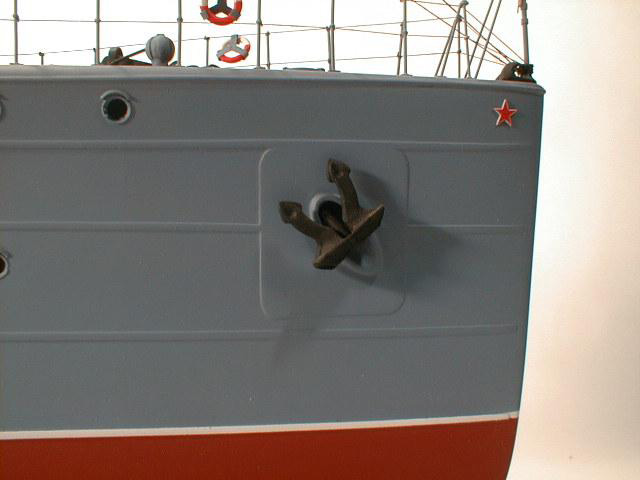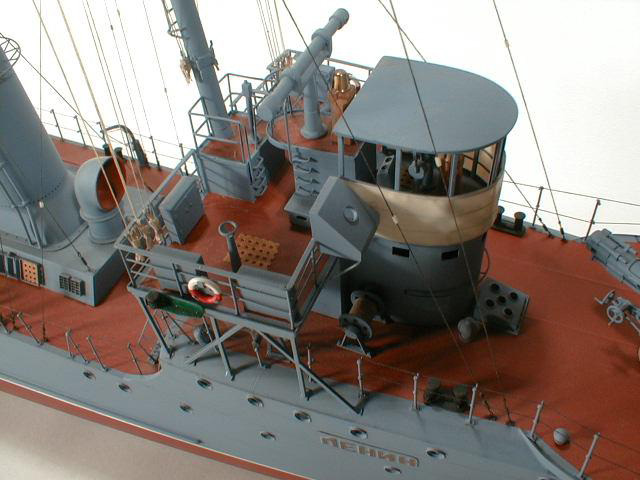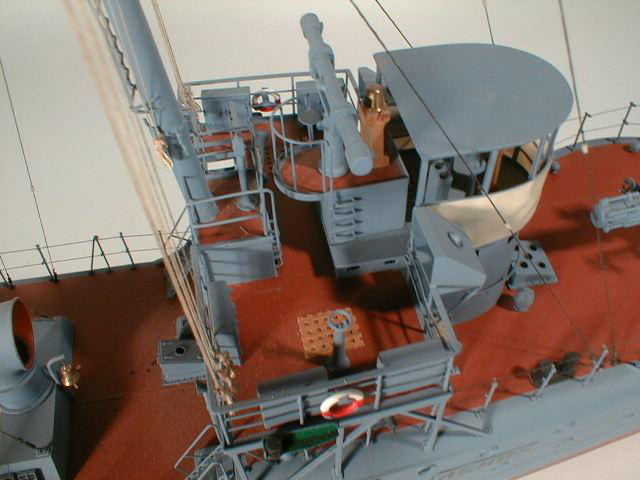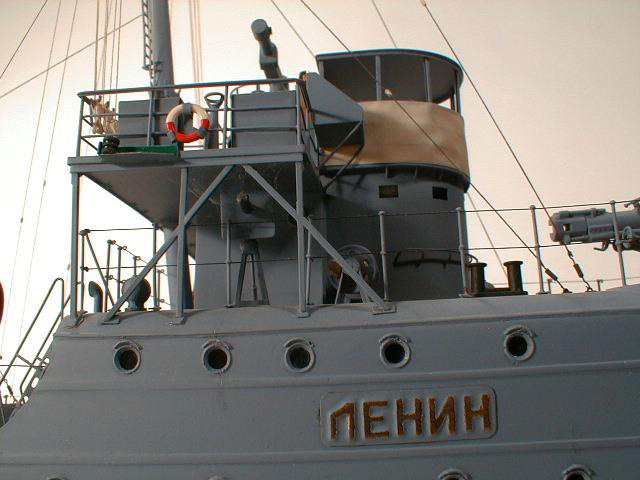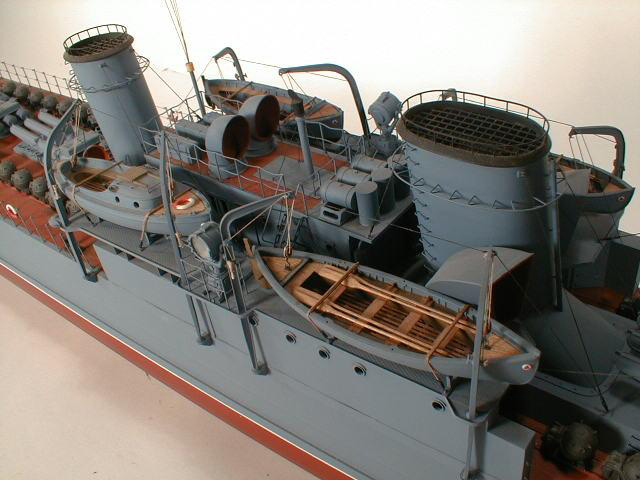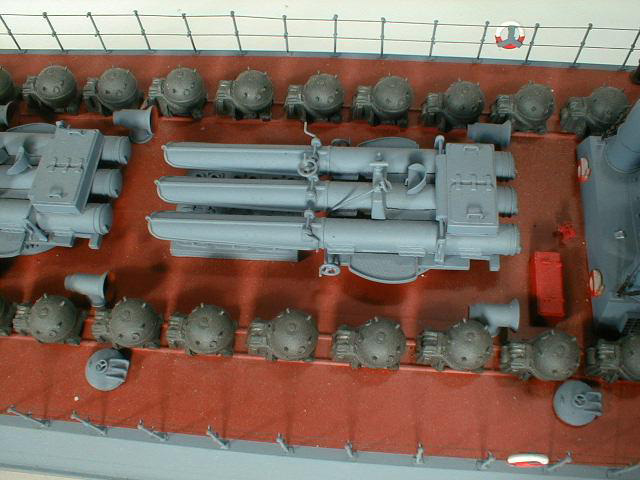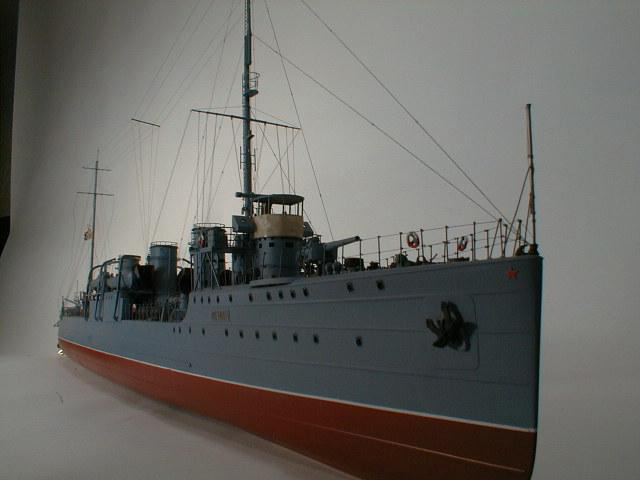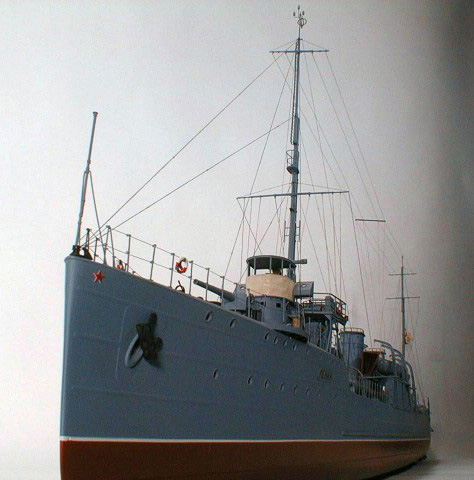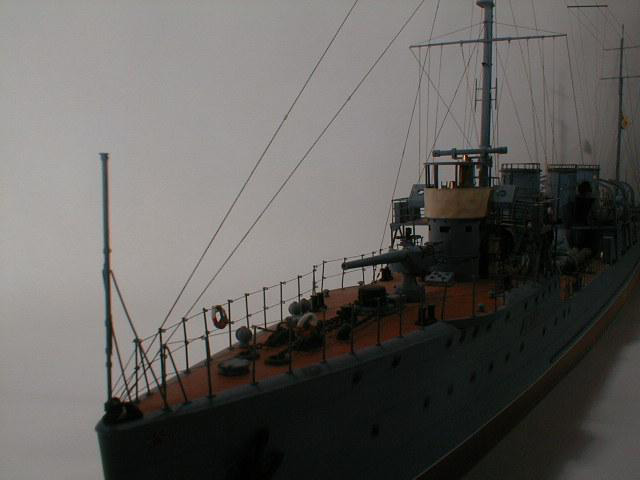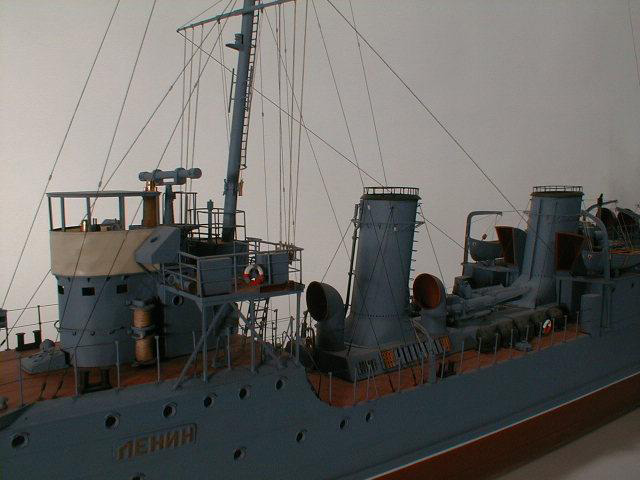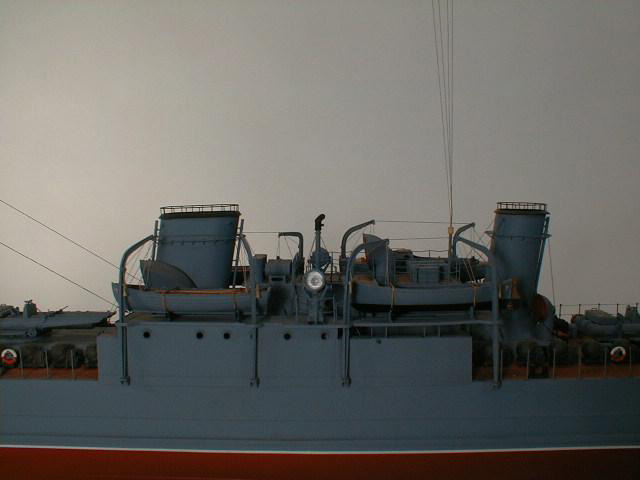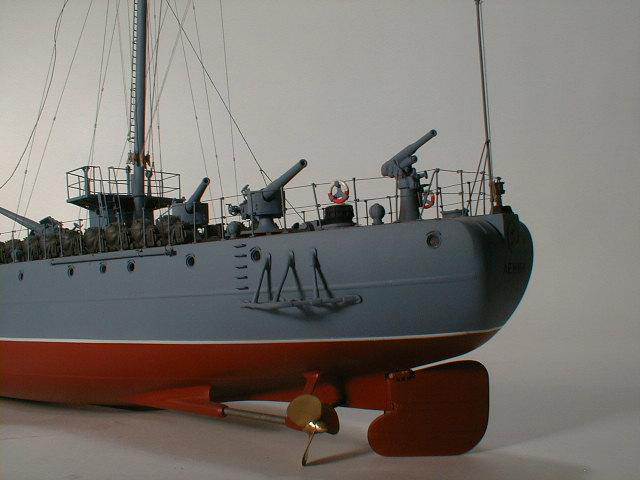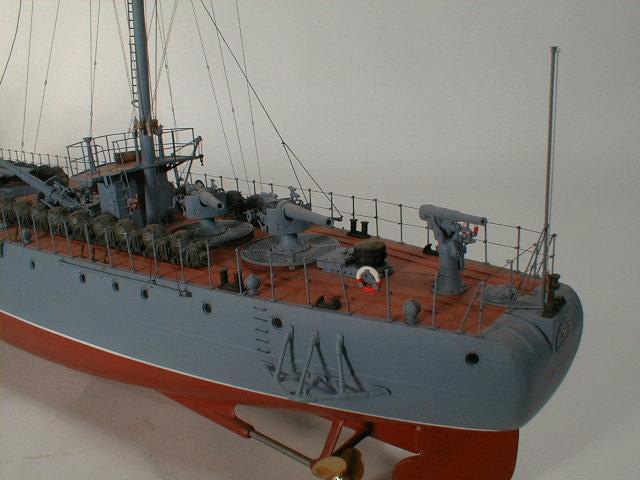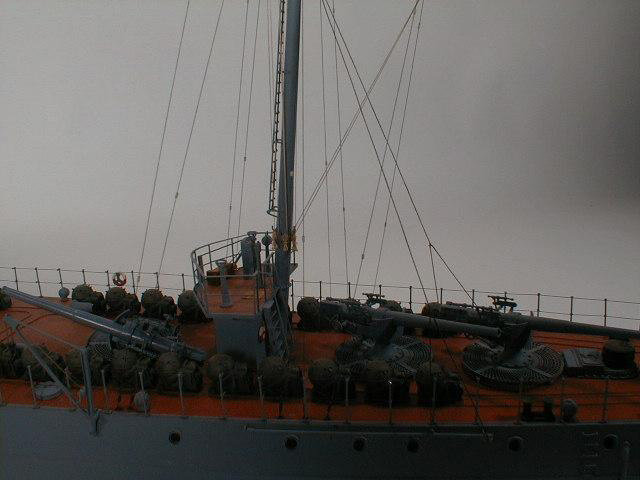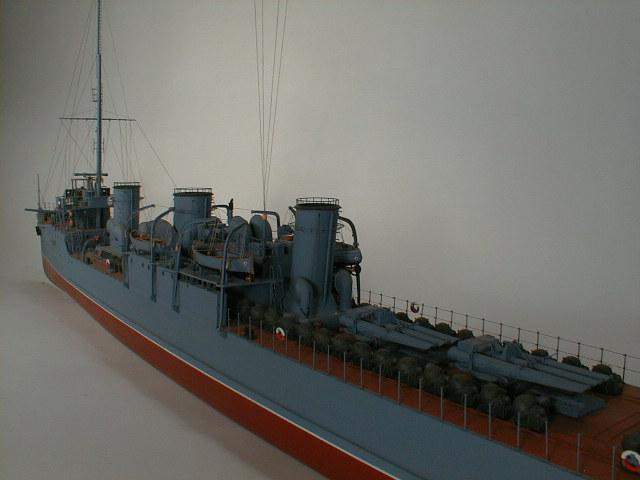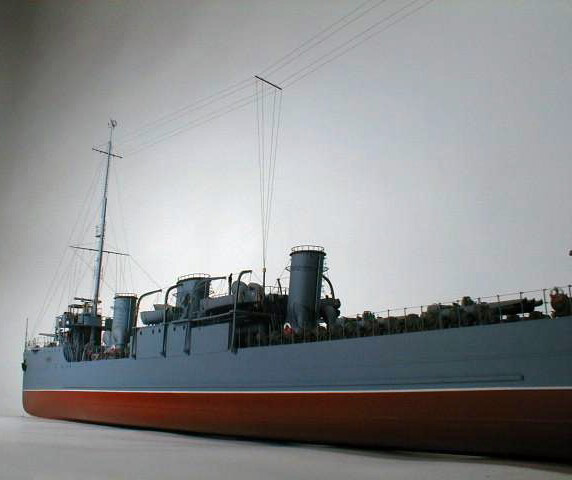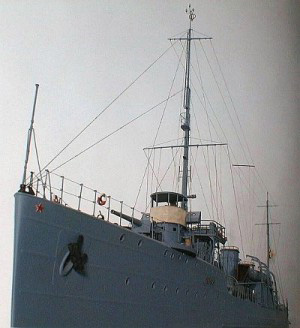Lenin
Soviet Lenin Class Destroyer
- Scale: 1:50
- Release: 1994
- Limited Edition: 18
- Model Size: 52”L x 4.5”W x 18.5”H
- Base Type: Black Walnut
- Base/Case Size: 60”L x 9.5”Wx 21”H
- Availability: Sold out
Soviet Lenin-Class Destroyer
The Lenin and his brother (Russian ships were considered male) Voikov were the first two (2) ships of the projected eight-ship Karl Liebknecht class (one of many classes developed from the Imperial Russian Navy’s Novik himself, based on German plans and commissioned in 1913). Two (2) other ships of this class were completed in the 1920s; of the remaining four (4), two (2) were cancelled, one (1) was never completed, and one (1) was captured by the British in 1918. While the latter went to the Pacific in the 1930s, the Lenin remained in the Baltic. Under repair at Libau when World War II broke out, he was scuttled there on June 24, 1941 to prevent capture.
At first glance, the 321-foot Lenin is laid out similarly to contemporary American flush-deck destroyers of the Clemson and Wickes classes, which were built in such great numbers beginning late in World War I. But a second look reveals many interesting and even surprising features. He is equipped with a single 4-inch gun forward and two three-tube torpedo batteries abaft of an amidships deck house, which carries ship’s boats and searchlights on its roof. Like other early destroyers, the Lenin needed a large power plant to generate her 24-knot top speed, and his three widely-spaced stacks reflect the enormous portion of displacement devoted to fire and engine rooms.
Unexpected is the heavy gun battery aft, where three (3) more 4-inch guns and one (1) 3-inch antiaircraft gun are mounted. Two (2) of these 4-inchers are installed so closely together that their crews must have physically interfered with one another except when firing at targets bearing abeam. Also, they would have been prevented by the 3-inch from bearing directly astern, an awkward arrangement inherited from the Novik.
Fine Art Models
The Lenin was designed as a minelayer, and our model comes with a full load of mines, riding on special tracks that lead aft, so they can be rolled off the stern over the specially shaped transom. All in all, she is a fascinating example of naval construction from a day long gone, with the 1:50 scale offering fascinating details.
Particularly exquisite on these models are the finely detailed lifelines and rigging, where short cables are spliced together to make longer ones just as on the original ships. Also interesting are the lifesaving rings hanging from the lifelines, the open pilot house including the binnacle and wheel, the centerline torpedo tube mounts, the lifeboats with complete inside detail, and the gold nameplates and insignia on the stern.
